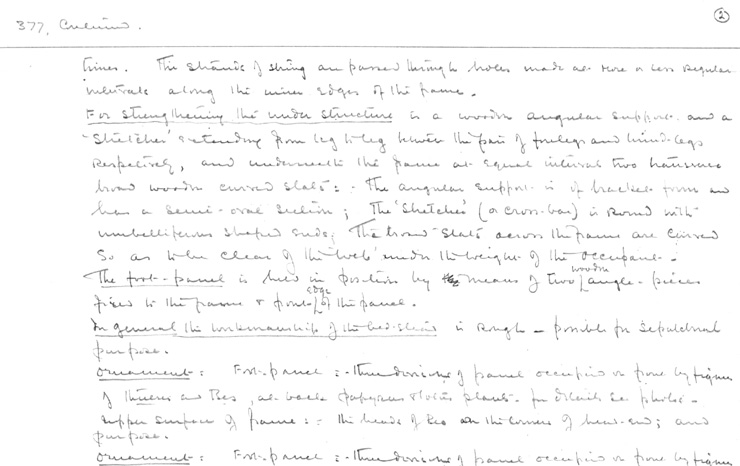Handlist description: Bedstead (wood, stucco, and gold foil)
Card/Transcription No.: 377-2
377, continued. 2.times. The strands of string are passed through holes made at more or less regular intervals along the inner edges of the frame. For strengthening the under structure is a wooden angular support and a 'stretcher' extending from leg to leg between the pair of forelegs and hind-legs respectively, and underneath the frame at equal intervals two transverse broad wooden curved slats: the angular support is of bracket form and has a semi-oval section; the 'stretcher' (or cross-bar) is round with umbelliferous shaped ends; the broad slats across the frame are curved so as to be clear of the 'web' under the weight of the occupant. The foot-panel is held in position by means of two wooden angle-pieces fixed to the frame & front edge of the panel. In general the workmanship of the bed-stead is rough - possible for sepulchral purpose. Ornament: Foot panel: three divisions of panel occupied on front by figures of Thueris and Bes, at back papyrus & lotus plants. For details see photos. Upper surface of frame: - the heads of Bes on the corners of head-end; and bands of pattern simulating webbing.
